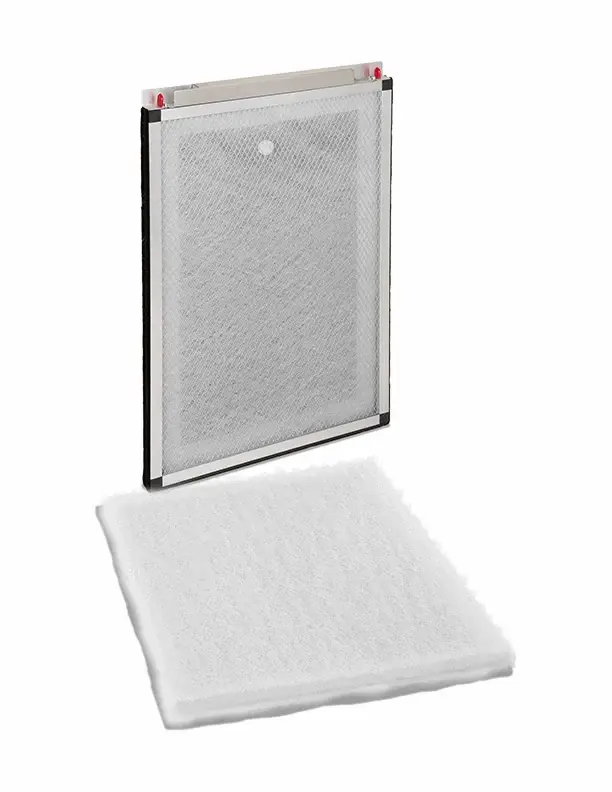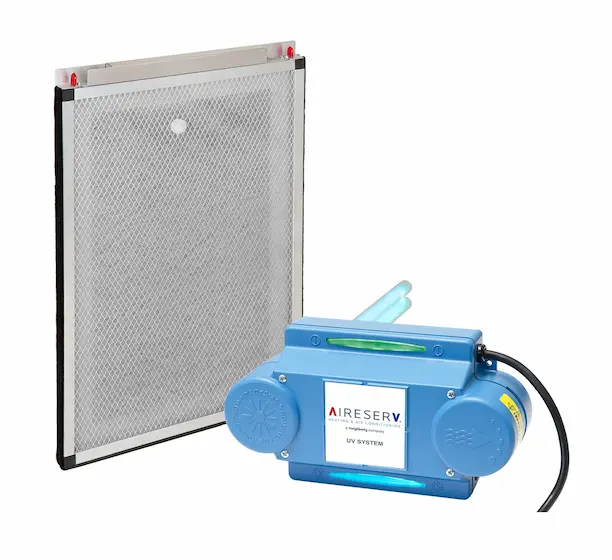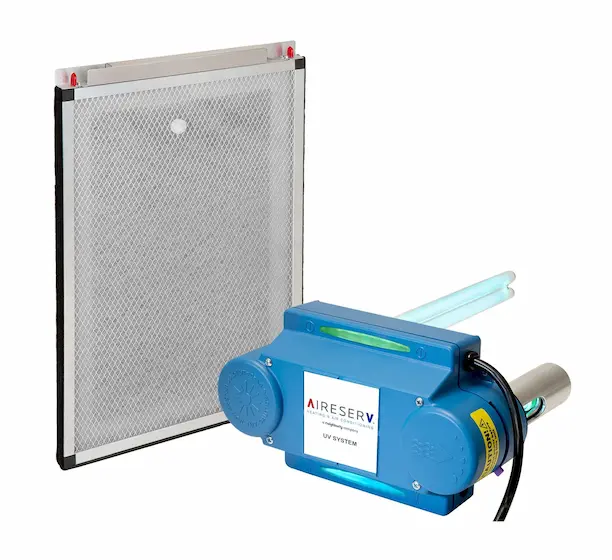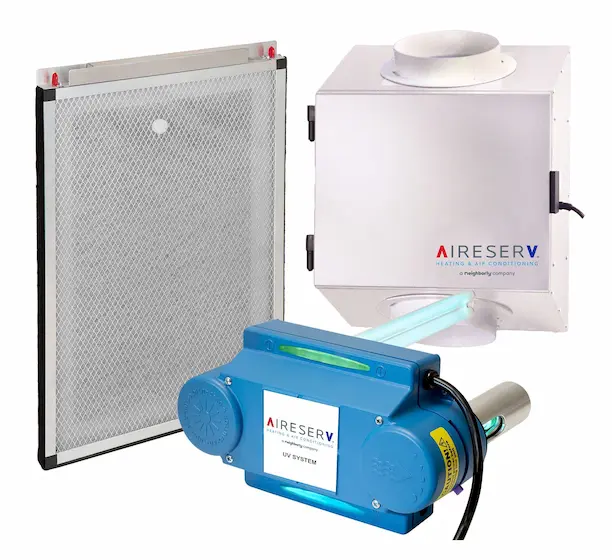As a homeowner, it pays to be aware of the 3 main phases of indoor air contamination and all the ways, both obvious and not-so-obvious, that they could be causing you unnecessary grief. All 3 phases are found in every household; studies show that keeping these levels under control can enhance the efficiency of your HVAC system and your health. The good news is that it’s easy to control these contaminants and improve your indoor air quality. The information below explains the best ways to address the problem, with safe, affordable solutions.
Indoor Air Quality — The 3 Important Phases to Know
Indoor Air Quality — The 3 Important Phases to Know
The Three Phases of Indoor Air Contamination

Particles and Allergens
-
Dust
-
Smoke
-
Pollen
-
Pet Dander

Germs and Infection Agents
-
Germs
-
Viruses
-
Bacteria
-
Biological Growth

Chemical Gasses and Odors
-
Pet
-
Smoke
-
Cooking Odors
-
Volatile Organic Compounds
We're Here to Help
Because each home has unique needs, your local Aire Serv® offers four indoor air quality solutions that are designed to provide cleaner, healthier indoor air. Contact your local Aire Serv to discuss options. Our Home Comfort Designer will help you build a package that best fits your home and lifestyle.
Our packages at a glance
| Phase 1 (Dust) | Phase 2 (Germs) | Phase 3 (Odors) | |
| Bronze | ✔ | ||
| Silver | ✔ | ✔ | |
| Gold | ✔ | ✔ | ✔ |
| Platinum | ✔+ | ✔+ | ✔+ |
Our packages in detail
-

Bronze Package
Controls Phase 1
Package Includes: Polarized-Media Air Cleaner
- ✔ Collect 97% of particles from 200 to .3 microns in size, preventing release into the air you breathe. Particles removed include dust, lint, dirt smoke, soot hair and pet dander.
- ✔ Provides asthma and allergy relief
- ✔ Disposable pad, and should be replaced every 3 – 4 months
- ✔ Protects your equipment and prevents buildup of dust & particles throughout your HVAC equipment that standard filters miss
-

Silver Package
Controls Phases 1 & 2
Package Includes: Everything in Bronze package + Germicidal UVC Lamp System
- ✔ Disinfects your air to remove germs (viruses, bacteria, and other germs) naturally, without using chemicals or sprays
- ✔ Help further reduce asthma and allergy symptoms
- ✔ Provides 3+ years of active UVC protection and performance throughout the replaceable lamp’s life
-

Gold Package
Controls Phases 1, 2, & 3
Package Includes: Everything in Silver package + Oxidation UVV System
- ✔ Neutralizes odors caused by smoke, cooking, and chemicals
- ✔ Naturally oxidizes and controls the off-gassing of chemical gasses from building materials, furniture, cleaning chemicals and sprays that may be an irritant and cause health concerns
-

Platinum Package
Controls Phases 1, 2, 3, & more
Package Includes: Everything in Gold package + Bypass HEPA system
- ✔ HEPA filter system that is considered the best filter on the market today
- ✔ Collects 99.97% of particles from 200 to .1 microns, preventing release into the air you breathe
- ✔ For severe asthma and allergy relief
- ✔ Ultimate equipment and health protection
Learn more about indoor air quality and why it’s important.